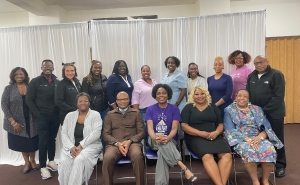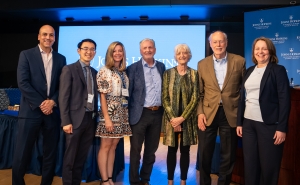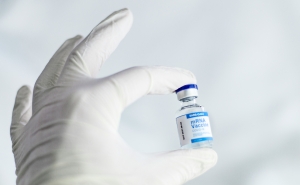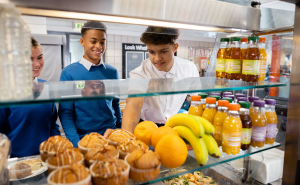Fresh, Healthy Food—at the Convenience Store?
The Baltimore Urban Food Distribution project will match food producers and store owners to bring fresh produce and other healthy options to corner stores in low-income neighborhoods.
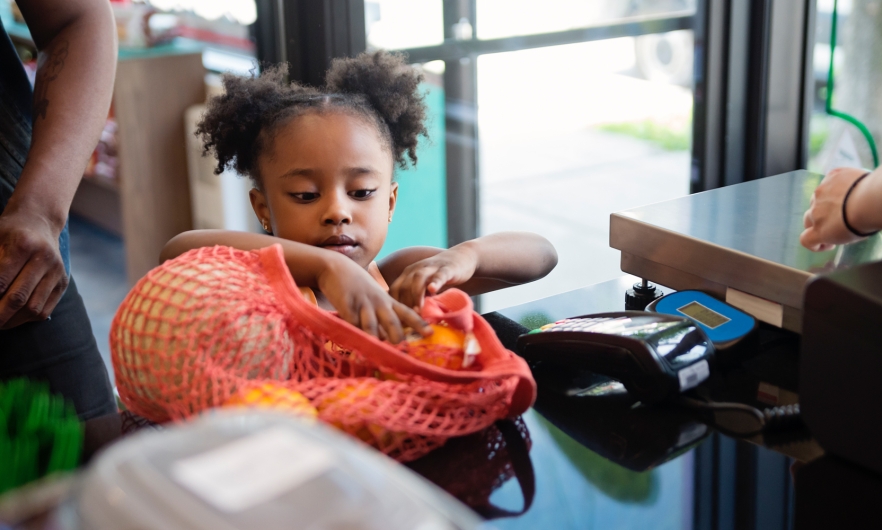
Small corner stores are fixtures in most low-income neighborhoods in Baltimore. They sell lottery tickets and cigarettes, and their shelves are stocked with high-fat, high-sugar, high-salt, processed foods.
For many community residents who lack transportation and money to shop in conventional grocery stores, the corner store may be their main source of food.
That’s problematic. It’s well-documented that the type of food source in a neighborhood is related to diet and health, with small convenience stores associated with high rates of diet-related chronic diseases like diabetes and obesity.
But what if corner stores could be a source of healthy food, like fresh produce?
That’s the goal of the Baltimore Urban food Distribution (BUD) project. The centerpiece of the effort, led by Joel Gittelsohn, PhD, a professor in International Health’s Human Nutrition program, is an app to make it convenient and cost-effective for food suppliers and East Baltimore corner stores to connect, with the aim of getting fresh produce to the stores and ultimately to the consumers who patronize them.
The project is unique among public health nutrition interventions, he says, in that it is one of the first attempts to engage multiple levels of a local food system.
“This one really does attempt to work at the supplier level, the retail level, and ultimately impacting at the consumer level,” says Gittelsohn, who has 20 years of experience working to improve access to healthy foods in Baltimore’s low-income communities. “It potentially has a broader reach if it becomes successful and self-sustaining.”
The Problem
It’s easy for store owners to stock their shelves with unhealthy foods, which are typically delivered by a large food distributor and often at a discounted price. But “this is not the case for a bag of fresh vegetables or low-fat milk or whole-grain bread,” says Gittelsohn. “If corner store owners want to stock those foods, they typically have to go to the wholesaler, pick them up, and stock them in the store.”
“It’s not as simple as ‘These bad store owners aren’t giving healthy foods to the community,’” says Gittelsohn. “They’re at a disadvantage when it comes to stocking healthier foods even if they want to.”
On the supplier side, some farmers have told researchers that they give away large quantities of surplus food, are aware of limited access to healthy food sources in low-income urban neighborhoods, and want to sell to corner stores, but don’t know how to go about it.
“We try to tap into that and talk to them about market expansion and opportunities on their end to participate,” says Emma Lewis, MS, a PhD candidate and BUD researcher.
The App
Previous efforts to promote more nutritious food consumption in Healthy Food Priority Areas—like using shelf labels in corner stores to identify healthy foods and healthy-food tastings—primarily targeted consumers and retailers.
The BUD app, on the other hand, was designed with store owners and food suppliers in mind. Through the app, suppliers post their products available for sale, and store owners can make purchases. Cost-saving features encourage corner stores to participate: Buddy Up allows stores to team up to buy larger quantities of food at cheaper prices than they could individually. Through Buddy Lift, a store owner in the Buddy Up program can get an additional discount for picking up and delivering the food to the participating stores.
The app was designed by Takeru Igusa, MS, PhD, professor in the Johns Hopkins Whiting School of Engineering, Siyao Zhu, MS, a doctoral student at Whiting, and Nina Martin, PhD ’17, a researcher at the Johns Hopkins Applied Physics Laboratory.
Researchers gave a simplified version of the BUD app a test run in a pre-pilot with two corner stores and one food producer. The owners purchased food from SpringForward hydroponic farm, including kale and mustard greens, and sold all the food that they ordered. Both said they would continue to use the app if given the opportunity.
The Challenges
As the BUD team prepares for a feasibility pilot of the intervention, recruiting storeowners presents some challenges, including language and some hesitancy around mobile technology.
Although corner stores are typically located in Black neighborhoods, the owners represent a range of ethnicities—Korean, Chinese, Hispanic, Middle Eastern. In recruitment and research visits to stores, the BUD team brings along a translator, typically a graduate student on the BUD team.
Team members make a point of emphasizing the benefits of the project to store owners, including an opportunity to realize financial gains by adopting the BUD app.
The Plan
Once recruitment and baseline data collection are complete, the team will start the eight-month pilot next year in a sample of 38 corner stores randomized to intervention and comparison. Researchers will monitor app usage data and evaluate impacts at the wholesaler, store, and consumer levels, with the focus on the store outcomes.
Key questions: Did stores increase their stock of healthy foods? Did they sell the healthier foods?
The next step: a full-scale trial with potential expansion to Detroit or Washington, D.C., and rural areas.
“Our biggest goal is for us not to be a middleman, and the app is our way to do that,” says Lewis. “It’s something that we can create, but make adaptable and give to the community.”
Jackie Powder is the assistant editor of Hopkins Bloomberg Public Health magazine.

